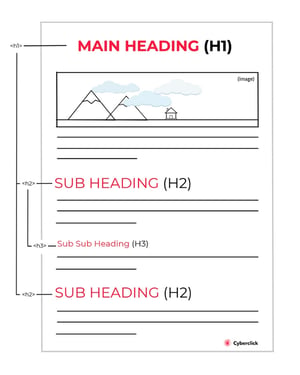For years and years, inbound marketing and SEO strategies have been based around individual keywords. But user behavior and the way search engines work are constantly changing. The result is that we have to rethink the way we organize our content.
In this "new era", individual pages organized around one keyword won’t cut it - It’s time to start focusing on pillar pages and topic clusters with links between them. More than one specific term, what matters now is correctly organizing the content according to thematic areas. Ready to give your website a spin? We tell you how to in this guide.
The Latest Changes in the World of SEO
The way users search for information has changed, and consequently so has the way SEOs and bloggers create content. Let's take a look at the main changes and their impacts.
Searches Are Longer and More Conversational
Typically, keyword-based strategies typically use one- or two-word search terms (e.g., "restaurants"). But according to HubSpot, currently, 64% of searches have 4 words or more (e.g. "Japanese restaurants near me"). The searches are becoming longer and more conversational, and they seek to obtain very specific information.
In part, this is due to the boom of voice searches. Today, thanks to Siri and Google Assistant, 20% of Google mobile searches are made by voice.
But that's not the only reason. Another thing to keep in mind is that nowadays users have access to a lot of content, and there is usually more quantity than quality. Because of this, users make more detailed searches to better filter the results and get the data they need faster.
On the other hand, it is more and more frequent to "browse" the content, based on article headers or Google's highlighted information to solve the doubt that initiated the search.
Search Engines Understand Users Better
Google's algorithms are constantly evolving to provide the best possible response to user searches. For example, Google is now able to interpret a search based on its overall meaning rather than on individual words and employs automatic learning strategies to interpret specific terms more accurately.
The result of all this is that Google provides the most accurate information possible in response to a search, even if the keyword does not correspond exactly to what the user has searched for. This implies that inbound marketers have to create content focused on needs and not simply on keywords. That's why the new model is based on creating articles on long tail keywords linked together and around a central hub so that we cover as many searches as possible around a particular topic.
The New Structure of Inbound Marketing: Pillar Pages and Topic Clusters
To help users find the information they are looking for on our website and to help search engines index us correctly, the solution is to use a topic cluster model. Choose the topics which you want to position for, create content based on keywords related to the topics and link them together. This structure is based on 3 key components: pillar pages, clusters, and links.
Image Source: HubSpot
SEO-Driven Content Clusters
Many SEO experts believe that the end of keyword dominance has come and content clusters are emerging as a vital factor for ranking in Google.
As a result, marketers and SEO specialists have started to propose possible content clustering ideas. Hubspot was the first to experiment with fruitful thematic clusters in 2016 and found that the higher the number of internal links, the better the placement in SERPs. The findings of this experiment opened a new horizon in the world of SEO.
Site Experience and the Core Web Vitals
With the latest updates to its algorithm announced in June 2021, Google explained that it will now take into account the user experience of a web page in order to rank it. The key on-page experience metric for marketers will be the Core Web Vitals, which measure the quality of a website in terms of user experience. You can check them out in Search Console's "Core Web Metrics" report.
What Is a Pillar Page?
A pillar page is long-form piece of content that is used to give a broad explanation of a certain topic, allowing other sub-topics, or topic clusters, to connect back to it. Pillar pages briefly cover all the main aspects of the topic on a single page. You can then create more detailed blog posts or articles that delve into more specific topics and link them to the pillar page.
Pillar pages talk about a topic in a general way and the cluster content covers related topics more in-depth. For example, you could write a pillar page about content marketing and a cluster of content about blogs. You could even go a step further and create secondary clusters, for example, an article about guest blogging or another one about choosing the best images for your blog.
Pillar pages are longer than typical blog articles, as they cover all aspects of the topic you want to position yourself for, but they don't go into as much detail. The idea is that the pillar page gives a quick answer to questions about a particular topic, allowing you to go deeper through the linked article.
The Main Types of Pillar Pages
Pillar pages can be very different depending on the theme they cover, and there is plenty of room for creativity. But to give you an idea, let's quickly look at the 3 most commonly used pillar pages according to HubSpot
- Pillar page 10x. This type of pillar page is the most elaborate and requires the most work. Most of the content on a pillar page 10x is self-made; it would be something like the equivalent of a downloadable ebook. They usually include internal navigation menus, since they are long pages.
- Pillar page of resources. These pillar pages are simpler and focus on links, both internal and external. They should include some text in each section, but the main purpose is to provide the reader with the most relevant links on a specific topic.
- Pillar page of subtopics. This type of pillar page focuses on topics less related to the problem the company is solving, but for those of us who are interested in positioning ourselves as experts. It does not include the main navigation menu of the site, as we want the user to focus on reading and not be distracted. As an example, Hubspot, which is an inbound marketing solution, has a pillar page for the subtopic "How to use Snapchat for companies".
How to Create a Pillar Page
To create a pillar page, the first step is to stop thinking of your website as a collection of keywords and start focusing on the topics you want to position yourself for. Once you are clear on what they are, make a list of ideas for articles based on more specific keywords that relate to the main theme.
For this strategy to work, the topics on your pillar pages need to be well-defined. They should be broad enough to allow for multiple clusters, but not so broad that they cannot be covered in a single page.
Pillar pages should answer a user's main questions about a topic so that they are encouraged to click on it when entering a related search term. Then, if they want to go deeper, they can click on one of the links on the pillar page to access a cluster of content.
If you have HubSpot, this video will walk you through how to build and organize a Pillar Page and Topic Cluster within the platform.
2 Examples of Strong Pillar Pages
- GoodUI Evidence: Marketers love data, and GoodUI has taken advantage of this by creating a pillar page dedicated exclusively to sharing A/B test results that reveal patterns for further conversion. By clicking on any of the data on the page, you can access a larger view of the test in question. In addition, there is a call to action button at the bottom of each section that encourages you to share your own experiments.
- Cloud Elements: Cloud Elements is an API integration platform that helps companies connect with third-party software. Its "definitive guide to API integration" is a great example of organization within a pillar page, as it divides this complex subject into 7 steps. In addition, it includes a handy side menu so the user knows where he stands at any given time.
What Is a Topic Cluster?
Topic clusters are pages that dive deeper into the topics mentioned in a pillar page. Normally, clusters have the format of blog articles, but that's not the only option: they can also be an infographic, a video, or even a podcast.
Normally, each cluster will be organized around the main keyword, but the most important thing is that it really solves the user's problems and provides useful content.
Why Are Links Important?
For this pillar content-cluster content structure to make sense for users and search engines, it is essential that it is correctly linked. Links pass authority from one page to another and allow users to navigate through them.
There are different ways to approach the link structure of a pillar page and its clusters, but the basic thing is that the pillar page links to each of the main clusters and these back to the pillar page. In addition, we must introduce links between clusters, especially when they solve closely related issues.
Best Practices for Your Pillar Pages and Cluster Content
To conclude, let's look at some recommendations to put all this information into practice and restructure your website to adapt to the new SEO standards.
- Start by auditing all the content of your page and see how you can reorganize it by subject. It might be a good idea to make a post-it for each article or page you already have and see how you can rearrange them around a series of central themes.
- When organizing your content, keep in mind that the main goal is conversion. Your pillar pages and clusters should be arranged in such a way that they make it easy for the user to follow a simple path from landing on the pillar page to becoming a lead.
- When creating your pillar pages, keep in mind that they should be longer than a standard blog post. The length depends on the type of pillar page (a resource pillar page is not the same as a 10x), but the general recommendation is that they should be at least 1500 words long. It is also important that it is not excessively long, so as not to discourage users from visiting it. If you don't feel able to cover the main aspects of the topic in a reasonable length, consider whether it would be better to divide the topic into several pillar pages.
- Take care of the anchor text of the links. Normally, links from the pillar page to a cluster should include a specific keyword (e.g. "how to take good pictures for Instagram"), while links "back" from a cluster should be more general (e.g. "marketing on Instagram").
- Make an index of all the articles that make up the cluster and include it in each of them, in the sidebar, or at the end of each article.
- It is recommended that the text design in pillar pages and clusters be linear, blog article type. Avoid independent text blocks and dropdowns, since if you use them Google will not be able to correctly crawl the page and index the content.
- Clusters should always be well indicated and within one click, without records or forms.
- Include "breadcrumbs" with the link path at the beginning of the articles, especially if you have main and secondary clusters. This will facilitate navigation and prevent the user from getting lost.
- And of course, keep using the good SEO practices we've talked bout: focus on quality content, include alt text for images, prioritize text with H1, H2, and H3, or add rich content when necessary. Pillar pages are a model that adds to, but does not replace, everything you are already doing.

Responsable de la estrategia de contenidos y visibilidad en Cyberclick, con enfoque Allbound y especialización en posicionamiento SEO, GEO y automatización con IA. Gestión avanzada del CRM con HubSpot: base de datos, workflows, lead nurturing, scoring y reporting. Experiencia en marketing digital, comunicación corporativa y periodismo, uniendo estrategia, creatividad y tecnología para captar y convertir leads cualificados.
Responsible for content and brand visibility strategy at Cyberclick, with an Allbound approach and specialization in SEO, GEO (Generative Engine Optimization), and AI-powered automation. Advanced HubSpot CRM management: database segmentation, workflows, lead nurturing, scoring, and reporting. Background in digital marketing, corporate communications, and journalism—combining strategy, creativity, and technology to attract and convert qualified leads.



%20in%20SEO.webp)


Leave your comment and join the conversation